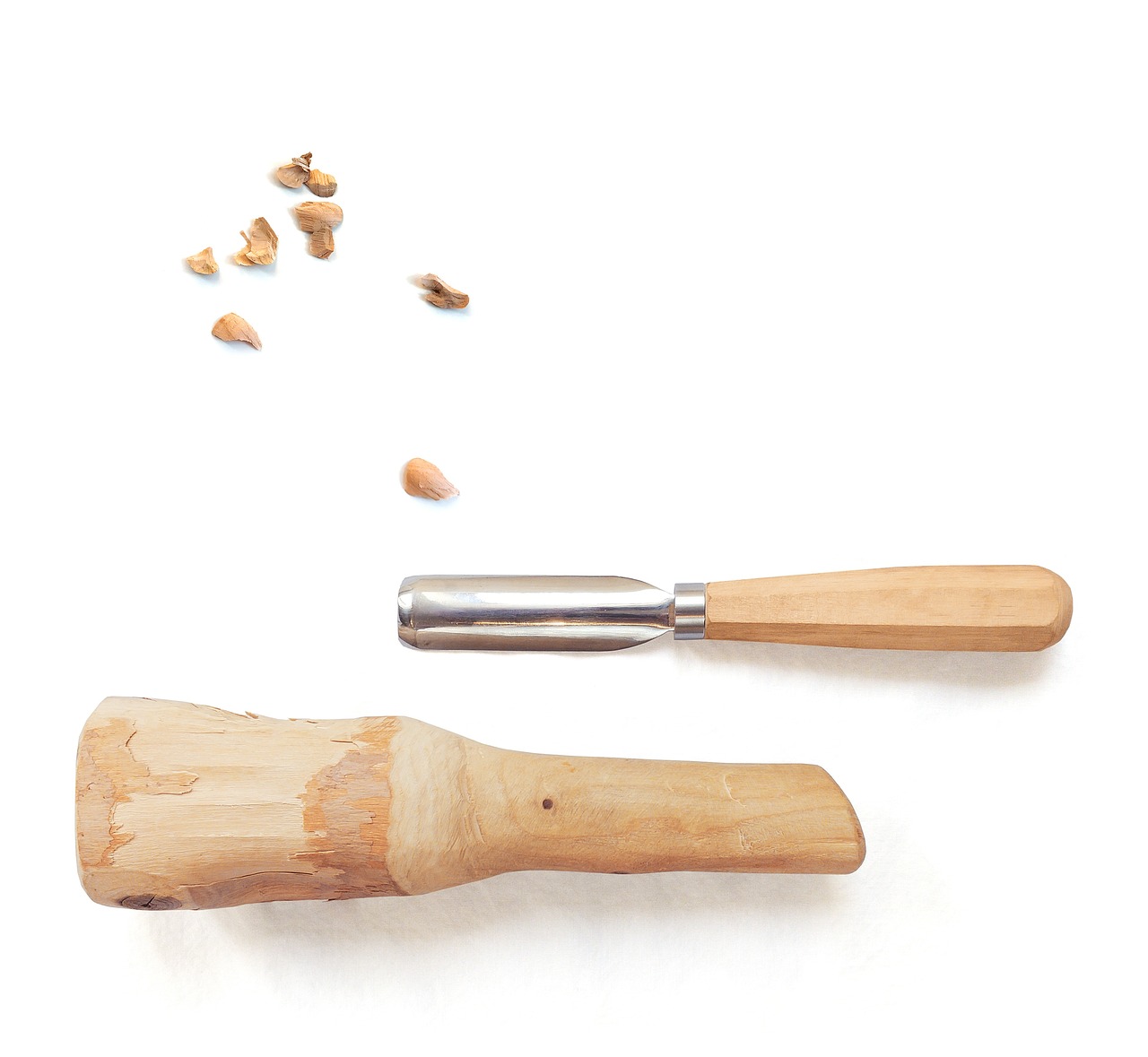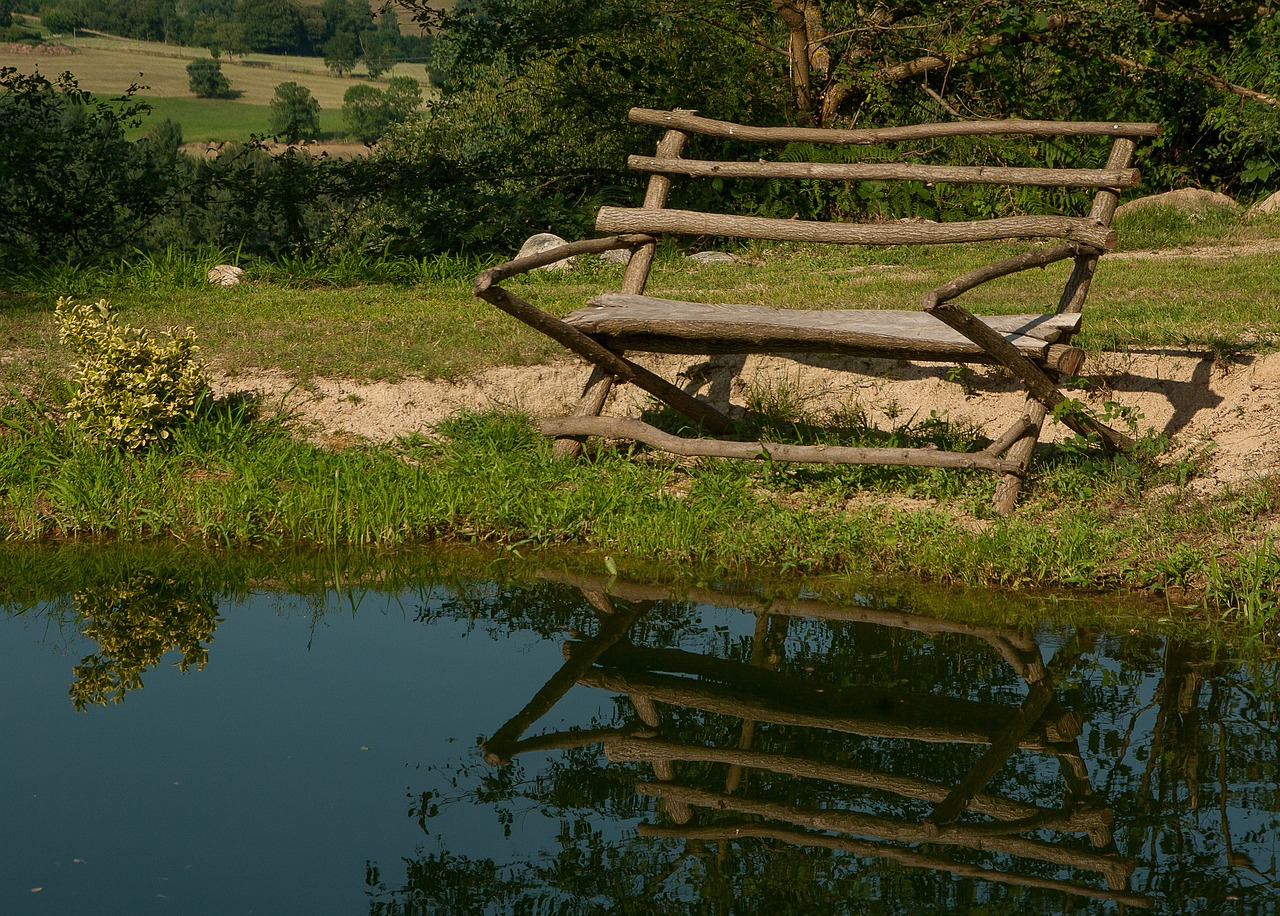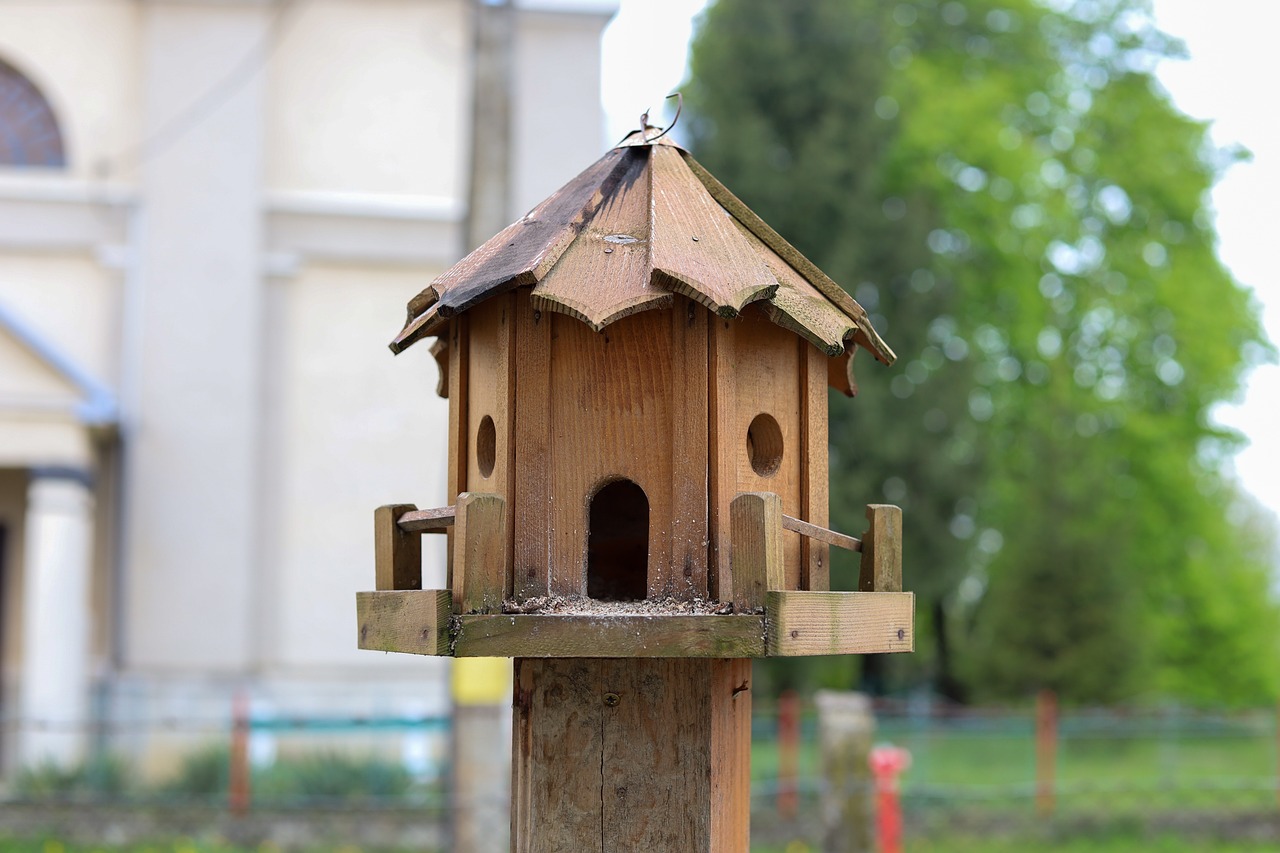Three Must-Try Country-Style Woodworking Projects
Are you ready to roll up your sleeves and dive into the world of woodworking? If you’re looking for projects that not only sharpen your skills but also add a touch of rustic charm to your home, you’ve come to the right place! In this article, we’ll explore three engaging country-style woodworking projects that are perfect for both beginners and seasoned craftsmen alike. Imagine sipping coffee at a handcrafted table, lounging on a sturdy farmhouse bench, or nurturing plants in a beautifully designed wooden planter box. Sounds appealing, right? Let’s get started on these delightful projects that will bring warmth and character to your living space!
Building a rustic coffee table is a perfect starter project that combines practicality with style. Picture this: a cozy living room, friends gathered around, and the centerpiece is a stunning coffee table that you crafted yourself! Not only does it serve as a functional piece, but it also becomes a conversation starter. In this section, we’ll walk you through the steps of selecting materials, crafting the table, and adding those finishing touches that bring out its natural beauty. You’ll learn how to choose the right wood, the tools you’ll need, and techniques for assembling the pieces securely. By the end of this project, you’ll have a beautiful, custom coffee table that reflects your personal style.
Creating a farmhouse style bench is another fantastic project that combines functionality with aesthetic appeal. Whether you need extra seating in your entryway or a decorative piece for your garden, this bench is versatile and charming. Imagine a sturdy bench, made from quality materials, where you can sit and enjoy your morning coffee or display your favorite potted plants. In the following sections, we’ll cover everything from choosing the right wood to finishing techniques that enhance the bench's rustic look.
Selecting the appropriate wood is crucial for both durability and style. You want a material that not only looks good but can withstand the test of time. Here are some popular wood types you might consider:
- Oak: Known for its strength and beautiful grain, oak is a classic choice for rustic furniture.
- Pine: Affordable and easy to work with, pine offers a light color that can be stained to match your decor.
- Maple: This hardwood is durable and has a fine, smooth grain that can be stunning when finished properly.
Each type of wood has its unique characteristics, so think about the look you want to achieve and how much wear and tear the bench will endure.
Once your bench is assembled, it’s time to make it shine! Finishing techniques are essential for enhancing the wood's natural grain and protecting it from wear. Here are a few methods to consider:
- Stains: Stains can add depth and richness to the wood, allowing the grain to show through.
- Paint: A fresh coat of paint can give your bench a pop of color, perfect for a more modern farmhouse look.
- Sealants: These protect the wood from moisture and scratches, ensuring your bench lasts for years.
By experimenting with different finishes, you can create a unique look that complements your home.
Feeling creative? There are countless design variations you can explore to personalize your bench! From simple, clean lines to intricate carvings, the possibilities are endless. You could add armrests, incorporate storage space underneath, or even paint a fun design on the seat. Let your imagination run wild and create a piece that truly reflects your style!
Proper assembly is key to a sturdy bench. Here are some essential tips to ensure your bench is both functional and visually appealing:
- Measure Twice, Cut Once: Always double-check your measurements to avoid mistakes.
- Use Quality Fasteners: Invest in good screws and brackets to ensure a secure hold.
- Check for Level: Make sure your bench is level during assembly to avoid wobbling later.
Follow these tips, and you’ll end up with a beautiful, sturdy bench that you can be proud of!
Next up is a wooden planter box, a delightful addition to any garden. Imagine a beautifully crafted planter that not only holds your favorite flowers but also enhances your outdoor space. This project is straightforward yet rewarding, making it perfect for those who love gardening. We’ll guide you through the process of building a planter box that’s easy to maintain and complements your garden's aesthetic.
Choosing the right dimensions and design for your planter box is essential for both aesthetics and plant health. A well-designed planter not only looks good but also provides ample space for roots to grow. Think about the types of plants you want to grow and their specific needs. For example, a deeper box is ideal for root vegetables, while a shallower one works well for flowers. Consider the following dimensions:
| Plant Type | Recommended Depth | Recommended Width |
|---|---|---|
| Herbs | 6-12 inches | 12-18 inches |
| Flowers | 8-12 inches | 18-24 inches |
| Vegetables | 12-18 inches | 24-36 inches |
With these guidelines, you can create a planter that suits your gardening needs perfectly!
Effective drainage is vital for plant health. Without proper drainage, your plants can suffer from waterlogging, which can lead to root rot. Here are a few drainage solutions to incorporate into your planter box design:
- Drainage Holes: Make sure to drill holes at the bottom of your planter to allow excess water to escape.
- Layering: Use rocks or gravel at the bottom of the box to create a drainage layer.
- Soil Mix: Consider using a well-draining soil mix that promotes healthy root growth.
By implementing these solutions, you’ll ensure your plants thrive in their new home!
Q: What tools do I need for these projects?
A: Basic woodworking tools like a saw, drill, measuring tape, and sandpaper will suffice for these projects.
Q: How long will these projects take?
A: Depending on your skill level and the time you dedicate, each project can take anywhere from a few hours to a weekend.
Q: Can I customize these projects?
A: Absolutely! Feel free to add your personal touch through colors, finishes, and design variations.
Q: What is the best wood for outdoor projects?
A: For outdoor projects, consider using pressure-treated wood or naturally rot-resistant woods like cedar or redwood.
Now that you have all the information you need, it’s time to grab your tools and get started on these exciting woodworking projects! Happy crafting!

Rustic Coffee Table
Building a is a perfect starter project for anyone looking to dip their toes into the world of woodworking. Not only does it offer a chance to hone your skills, but it also results in a beautiful piece that can serve as a focal point in your living room. Imagine sipping your morning coffee or hosting friends around a table that you crafted with your own hands! It’s not just furniture; it's a conversation starter, a piece of art, and a testament to your craftsmanship.
To embark on this project, the first step is to select the right materials. You’ll want to choose wood that embodies that classic, rustic charm. Popular choices include pine, oak, and cedar. Each type of wood brings its unique characteristics to the table, quite literally! For instance, pine is affordable and easy to work with, while oak offers durability and a beautiful grain. Cedar, on the other hand, is naturally resistant to moisture, making it an excellent choice for a coffee table that might see spills or humidity.
Next, let’s talk about the construction process. Start by measuring and cutting your wood to the desired dimensions. A typical rustic coffee table might measure around 48 inches long, 24 inches wide, and 18 inches high. Once you’ve got your pieces cut, it’s time to assemble them. You can use wood glue and screws for a secure hold, ensuring that your table can withstand the test of time and the weight of your coffee mugs, books, and maybe even a few snacks!
After assembly, the finishing touches are what really bring out the natural beauty of your rustic coffee table. You might want to consider sanding the surface to smooth out any rough edges, followed by applying a wood stain that complements your home’s decor. For a truly rustic look, a dark walnut or weathered gray stain can enhance the grain and give it that aged appearance. Don’t forget to seal your table with a clear coat to protect it from scratches and spills!
Here’s a quick overview of the steps involved in creating your rustic coffee table:
| Step | Description |
|---|---|
| 1 | Select and purchase your wood. |
| 2 | Measure and cut the wood to your desired dimensions. |
| 3 | Assemble the pieces using wood glue and screws. |
| 4 | Sand the surface to remove rough edges. |
| 5 | Apply stain and sealant to finish. |
With each step, you’ll find that building a rustic coffee table is not just a project; it’s an experience. You’ll feel a sense of accomplishment as you watch your creation come to life, transforming raw materials into a stunning piece of furniture. So roll up your sleeves, grab your tools, and let the magic of woodworking unfold in your home!

Farmhouse Style Bench
Creating a combines functionality with aesthetic appeal, making it a fantastic project for both novice and experienced woodworkers. Imagine having a beautiful, rustic bench that not only serves as extra seating but also adds a touch of charm to your home or garden. In this section, we will delve into the process of constructing this versatile piece of furniture, focusing on materials, design, and assembly tips to help you create a bench that is both sturdy and visually pleasing.
When embarking on this project, the first step is to consider where your bench will be placed. Will it be indoors, perhaps in your entryway, or outdoors in your garden? This decision will influence the materials you choose. For indoor benches, you might opt for softer woods like pine or cedar that can be easily painted or stained. Outdoor benches, on the other hand, benefit from more durable woods like teak or redwood that can withstand the elements.
Selecting the appropriate wood is crucial for both durability and style. Here are some popular wood types to consider:
- Pine: Affordable and easy to work with, perfect for beginners.
- Cedar: Naturally resistant to decay, ideal for outdoor projects.
- Oak: Extremely durable and offers a classic look.
- Teak: A premium choice for outdoor furniture due to its weather resistance.
Once you’ve selected your wood, it’s time to decide on the design of your bench. A traditional farmhouse bench typically features a simple, sturdy structure with clean lines. However, you can personalize it with unique touches such as decorative legs or a distressed finish to enhance its rustic charm.
After assembling your bench, the finishing touches are what truly bring your project to life. Finishing techniques can enhance the wood's natural grain and protect it from wear. Here are a few options:
- Stains: Use wood stains to add color while showcasing the grain.
- Paint: A fresh coat of paint can transform the look of your bench, allowing it to fit seamlessly into your decor.
- Sealants: Apply a sealant to protect the wood from moisture and UV damage, especially for outdoor benches.
By experimenting with these techniques, you can create a bench that reflects your personal style while maintaining the rustic aesthetic that defines farmhouse decor.
Don’t be afraid to get creative with your bench design! Here are some variations you might consider:
- Simple Slat Bench: A straightforward design with slats for seating.
- Storage Bench: Incorporate a storage compartment under the seat for added functionality.
- Backrest Bench: Adding a backrest can enhance comfort, making it perfect for long gatherings.
These ideas can inspire you to make a unique piece that fits your style and needs. Remember, the beauty of woodworking lies in the ability to customize and create something that is truly yours!
Proper assembly is key to a sturdy bench. Here are some essential tips to ensure your bench is both functional and visually appealing:
- Use Quality Joinery: Consider using dowels or pocket screws for strong joints that will hold up over time.
- Sand Smooth: Before assembling, sand all pieces to avoid splinters and ensure a smooth finish.
- Check for Level: As you assemble, make sure everything is level to prevent wobbling.
With careful attention to these details, your farmhouse style bench will not only be a practical addition to your space but also a beautiful testament to your woodworking skills.
What type of wood is best for a farmhouse style bench?
Choosing the right wood depends on where the bench will be used. Pine and cedar are great for indoor and outdoor use, respectively, while oak and teak offer durability and classic aesthetics.
How long does it take to build a farmhouse style bench?
The time required can vary based on your skill level and design complexity, but most projects can be completed in a weekend.
Can I customize the size of my bench?
Absolutely! One of the great things about woodworking is the ability to customize dimensions to fit your space perfectly.
What finishing options should I consider?
You can choose from stains, paints, or sealants depending on the look you want to achieve and the bench's intended use.

Choosing the Right Wood
When embarking on your farmhouse-style bench project, one of the most critical decisions you'll face is . The type of wood you select not only affects the durability of your bench but also its overall appearance and charm. Imagine walking into your home and being greeted by a beautiful, rustic bench that draws everyone’s attention. That’s the power of the right wood!
First off, let’s consider the most popular wood types for country-style woodworking. Each type has its unique characteristics, which can elevate your project to the next level:
| Wood Type | Characteristics | Best Use |
|---|---|---|
| Oak | Strong, durable, with a prominent grain | Heavy-use furniture, including benches |
| Pine | Lightweight, easy to work with, and affordable | Casual, rustic pieces |
| Maple | Hard, dense, and resistant to scratches | Long-lasting furniture and detailed designs |
| Cherry | Rich color that deepens with age | Elegant pieces that stand out |
Now, why is it so essential to choose the right wood? Well, think of it like choosing the right ingredients for a recipe. Just as a chef wouldn’t substitute flour for sugar, you wouldn’t want to pick a wood that doesn’t suit your project’s needs. For instance, if you’re looking for a sturdy bench that can withstand the test of time and heavy use, oak is a fantastic choice due to its strength. On the other hand, if you’re on a budget and looking for something a bit lighter, pine can be your best friend.
Moreover, consider the environment where your bench will reside. Will it be indoors or outdoors? If it’s going outside, you’ll want to opt for a wood that can handle the elements. Cedar and redwood are excellent choices for outdoor projects because they naturally resist moisture and pests. Imagine a bench that not only looks stunning but also withstands rain and shine!
Ultimately, the wood you choose can serve as the foundation for your entire project. It’s not just about aesthetics; it’s about creating a piece that tells a story, a piece that feels like home. So take your time, explore your options, and remember: the right wood can transform your bench from a simple project into a stunning centerpiece of your home.
- What wood is best for outdoor benches? Cedar and redwood are great choices as they are naturally resistant to moisture and insects.
- Can I use plywood for my bench? While plywood is affordable and easy to work with, it may not provide the rustic charm of solid wood.
- How do I maintain my wooden bench? Regularly apply a protective sealant and keep it clean to ensure longevity.

Finishing Techniques
When it comes to woodworking, the finishing touches can make all the difference. Think of your project as a canvas; without the right finish, it might lack the vibrancy and charm that truly showcases its beauty. In this section, we'll dive into various that not only enhance the natural grain of the wood but also protect it from the elements.
First up, let's talk about stains. Staining your wood can bring out the rich tones and textures that lie beneath the surface. It’s like giving your wood a makeover! You can choose from a wide range of colors, from deep mahogany to a light honey hue, depending on the look you want to achieve. When applying stain, remember to test it on a scrap piece of wood first to see how it reacts. The application process is simple: use a brush or rag to apply the stain, and then wipe off any excess. This technique not only enhances the appearance but also adds a layer of protection.
Next, we have paints. While some purists might argue that paint hides the wood's natural beauty, it can also add a fun and vibrant twist to your projects. Imagine a classic farmhouse bench in a bright, cheerful blue or a rustic coffee table in a crisp white. Painting can also serve as a protective barrier against moisture and wear. When painting, it’s essential to use a primer first, especially if you're working with softer woods that tend to absorb paint unevenly. After priming, a couple of coats of quality exterior paint will do wonders.
Another important aspect of finishing is the use of sealants. Sealants are like the armor for your wood project, providing a durable layer that guards against spills, scratches, and the inevitable wear and tear of everyday life. There are several types of sealants to choose from, including polyurethane, varnish, and oil-based finishes. Polyurethane is particularly popular for its durability and water resistance. When applying sealant, make sure to do it in a well-ventilated area and follow the manufacturer's instructions for the best results.
Lastly, don't forget about the application techniques. The way you apply your finish can greatly affect the final look. For a smooth finish, consider using a foam brush or a high-quality bristle brush. Always apply in the direction of the wood grain, and don’t rush the process. Patience is key! Allow each coat to dry completely before applying the next one, and remember that sometimes, less is more. A few thin coats will often yield better results than one thick coat.
In summary, finishing techniques are essential to elevate your woodworking projects from ordinary to extraordinary. Whether you choose to stain, paint, or seal, each method offers its own unique benefits and aesthetic appeal. With a little practice and experimentation, you’ll discover the perfect finish that complements your rustic style.
- What is the best finish for outdoor furniture?
For outdoor furniture, a high-quality exterior polyurethane or a marine-grade varnish is recommended due to their durability and resistance to moisture.
- Can I use stain over paint?
It's not advisable to use stain over paint, as the stain will not penetrate the paint properly. If you want a stained look, it's best to strip the paint first.
- How many coats of finish should I apply?
Typically, two to three coats of finish are recommended for optimal protection and appearance, but this can vary based on the type of finish and wood.

Design Variations
When it comes to creating a farmhouse style bench, the beauty lies not just in the construction but also in the you can explore. Think of your bench as a blank canvas waiting for your personal touch. You can choose from a variety of designs that reflect your personality and complement your home’s aesthetic. For instance, a simple, rustic bench made from reclaimed wood can evoke a sense of nostalgia, while a more modern take with clean lines can add a contemporary flair to your space.
One popular variation is the slatted bench design. This style features evenly spaced wooden slats that not only provide a classic look but also allow for airflow, making it comfortable for sitting. You might also consider a storage bench, which incorporates a hidden compartment beneath the seat. This design is perfect for those who need extra storage for outdoor cushions or gardening tools, combining functionality with style.
Another exciting option is to incorporate armrests. Adding armrests can transform a simple bench into a cozy nook, perfect for sipping coffee or reading a book. You can design them to be wide and sturdy or sleek and minimal, depending on your preference. Additionally, think about the bench's legs; you could opt for traditional tapered legs or go bold with a chunky farmhouse style that gives your bench a solid, grounded appearance.
To inspire your creativity further, consider the color palette you want to use. While natural wood finishes bring out the rustic charm, don’t shy away from using paint to add a splash of color. A soft pastel or a vibrant hue can make your bench a stunning focal point in your garden or entryway. You can even use stencils to add patterns or quotes that resonate with you, making the bench not just a piece of furniture but a statement piece.
Ultimately, the design variations are as limitless as your imagination. Whether you lean towards a traditional look or prefer a more modern twist, the key is to create something that resonates with your style and enhances your space. Remember, this bench will not only serve a practical purpose but will also be a reflection of your personality and creativity.
- What wood is best for a farmhouse style bench?
Hardwoods like oak or maple are ideal due to their durability, but softwoods like pine can also work well for a more rustic look.
- How can I make my bench weather-resistant?
Using a high-quality outdoor sealant or stain can help protect your bench from the elements, ensuring it lasts for years.
- Can I customize the dimensions of my bench?
Absolutely! Tailoring the dimensions to fit your space and needs is a great way to make your bench truly unique.

Assembly Tips
Assembling your farmhouse style bench is where the magic truly happens. This is the stage where all your planning and hard work come together to form a sturdy, beautiful piece of furniture. To ensure your bench doesn't just look great but also stands the test of time, there are several key tips you should keep in mind during assembly.
First and foremost, measure twice, cut once. This age-old adage is especially important in woodworking. Before you start joining pieces together, double-check all your measurements. A slight miscalculation can lead to uneven legs or a wobbly bench, which can be frustrating after all your effort. If you're unsure, use a square to ensure your angles are perfect and everything aligns correctly.
Next, consider the type of joints you’ll be using. There are various methods to join your wood pieces, and each has its advantages. For a farmhouse bench, you might opt for pocket hole joints for their strength and ease of use. Alternatively, you could use dowels or mortise and tenon joints for a more traditional approach. Each joint type has its own set of tools and techniques, so choose one that matches your skill level and the tools you have available.
When it comes to securing your joints, wood glue is your best friend. Not only does it add strength, but it also fills in any gaps, ensuring a tight fit. Apply glue liberally to the joint surfaces before clamping them together. Speaking of clamps, having a good set of clamps is essential for any woodworking project. They hold your pieces tightly while the glue dries, preventing any movement that could compromise the integrity of your bench. Make sure to leave the clamps on for at least an hour, but for the best results, let the glue cure overnight.
Another important aspect of assembly is ensuring your bench is level. After you’ve assembled the main structure, place it on a flat surface and check for stability. If one leg is shorter than the others, you can easily fix this by trimming it down or adding a small shim to the bottom. This attention to detail will pay off in the long run, as a level bench is not only more comfortable to sit on but also looks more professional.
Finally, don’t overlook the finishing touches. Once your bench is assembled, you might want to sand the edges to prevent splinters and create a smoother surface. A light sanding can make a world of difference in the overall appearance of your bench. After sanding, apply your chosen finish, whether it be a stain or sealant, to protect the wood and enhance its natural beauty.
Remember, assembling your farmhouse style bench is not just about putting pieces together; it's about crafting a piece that you can be proud of. Take your time, follow these tips, and soon you'll have a stunning bench that adds charm and functionality to your home.
- What type of wood is best for a farmhouse style bench?
The best woods for a farmhouse style bench are typically hardwoods like oak, maple, or cherry for durability. Softwoods like pine can also work well, especially if you're looking for a more rustic appearance.
- How long does it take to assemble a farmhouse bench?
The assembly time can vary based on your experience and the complexity of the design, but generally, you can expect to spend a few hours to a full day on the project.
- Can I customize the size of my bench?
Absolutely! One of the great things about building your own furniture is that you can customize the dimensions to fit your space perfectly.

Wooden Planter Box
Building a is not just a fun woodworking project; it's a way to bring a touch of nature into your home or garden. Imagine stepping out into your yard and being greeted by a beautifully crafted planter, filled with vibrant flowers or fresh herbs. Not only does it add aesthetic appeal, but it also provides a functional space for your plants to thrive. In this section, we'll walk you through the steps to create a planter box that complements your outdoor space while being easy to maintain.
Before you start, consider the size and location of your planter box. Will it be a centerpiece on your patio, or tucked away in a corner of your garden? The dimensions you choose will affect not only the visual appeal but also the health of your plants. A standard size for a medium planter box is about 36 inches long, 18 inches wide, and 12 inches deep, but feel free to adjust according to your needs. The key is to ensure that your plants have enough room to grow and that the box fits well into the intended space.
When selecting wood for your planter box, it's essential to choose materials that can withstand the elements. Cedar and redwood are excellent choices due to their natural resistance to rot and insects. If you're on a budget, pressure-treated pine can also work, but be sure to line the interior with plastic to prevent chemicals from leaching into the soil. Here's a quick comparison table to help you decide:
| Wood Type | Durability | Cost | Best For |
|---|---|---|---|
| Cedar | High | Moderate | Long-lasting outdoor projects |
| Redwood | Very High | High | Premium projects |
| Pressure-Treated Pine | Moderate | Low | Budget-friendly options |
Once you've chosen your wood, it's time to assemble your planter box. Start by cutting your wood to the desired dimensions, ensuring that all pieces fit snugly together. Use exterior wood screws or nails for added strength. As you assemble, remember to leave space for drainage holes at the bottom of the box; this is crucial for preventing water buildup, which can lead to root rot. You can drill a few holes in each corner or create a series of small holes along the bottom.
Speaking of drainage, it's essential to incorporate effective solutions into your design. A simple way to enhance drainage is by adding a layer of gravel or small stones at the bottom of the planter box before filling it with soil. This layer will help excess water escape while still providing a solid base for your plants. Additionally, consider using a landscape fabric to separate the soil from the gravel, preventing soil from washing away while allowing water to flow freely.
Lastly, let's talk about maintenance. A wooden planter box will require some care to keep it looking great and functioning well. Regularly check for signs of wear or damage, especially if it's exposed to harsh weather conditions. You might want to apply a protective sealant or wood treatment every couple of years to prolong its life and maintain its beauty. With the right care, your wooden planter box can be a stunning centerpiece for your garden for years to come.
- How deep should a planter box be? A depth of 12 inches is generally sufficient for most plants, but deeper for root vegetables.
- Can I use untreated wood for my planter box? Untreated wood may rot faster, so it's best to use treated wood or line the box with plastic.
- What plants are best for a wooden planter box? Herbs, flowers, and small vegetables like lettuce and radishes thrive in planter boxes.

Dimensions and Design
This article explores three engaging woodworking projects that embody the charm of country style. Each project is designed to enhance your skills while adding rustic beauty to your home.
Building a rustic coffee table is a perfect starter project. This guide will walk you through selecting materials, crafting the table, and finishing touches that bring out its natural beauty.
Creating a farmhouse style bench combines functionality with aesthetic appeal. Learn how to construct a sturdy bench that can serve as seating or a decorative piece in your entryway or garden.
Selecting the appropriate wood is crucial for durability and style. This section discusses different wood types and their suitability for a farmhouse bench, ensuring your project lasts for years.
Explore various finishing techniques to enhance the wood's natural grain and protect it from wear. This guide covers stains, paints, and sealants that suit a rustic aesthetic.
Discover creative design variations to personalize your bench. From simple designs to intricate details, these ideas will inspire you to make a unique piece that fits your style.
Proper assembly is key to a sturdy bench. This section provides essential tips for joining pieces securely and ensuring your bench is both functional and visually appealing.
A wooden planter box is a delightful addition to any garden. This project details how to build a planter that complements your outdoor space while being easy to maintain.
When it comes to crafting a wooden planter box, the dimensions and design play a pivotal role in ensuring both aesthetics and functionality. First, consider the size of the plants you plan to grow. For instance, if you're planting herbs, a smaller box measuring around 24 inches long, 12 inches wide, and 12 inches deep might suffice. However, if you're aiming for larger plants like tomatoes or peppers, you may want to scale up to a box that’s 48 inches long, 24 inches wide, and 18 inches deep.
In terms of design, think about how the planter box will fit into your existing garden landscape. A rustic design with rough-hewn edges can evoke that charming country feel, while a more polished finish may suit a modern garden. Consider using wood types like cedar or redwood, which not only look great but also resist rot, ensuring your planter lasts through the seasons.
To further illustrate some common dimensions and designs, here's a simple table:
| Plant Type | Recommended Dimensions (L x W x H) | Design Style |
|---|---|---|
| Herbs | 24" x 12" x 12" | Rustic |
| Vegetables | 48" x 24" x 18" | Modern |
| Flowers | 36" x 18" x 12" | Classic |
Ultimately, the dimensions and design should reflect not only your personal taste but also the needs of the plants you intend to grow. A well-designed planter box can become a focal point in your garden, drawing the eye and enhancing your outdoor space. So, take your time to sketch out ideas, measure your space, and envision how your planter will contribute to the overall beauty of your garden.
Effective drainage is vital for plant health. Learn about various drainage solutions to incorporate into your planter box design, ensuring your plants thrive without waterlogging.
- What type of wood is best for outdoor planter boxes? Cedar and redwood are excellent choices due to their natural resistance to rot and insects.
- How deep should a planter box be? A depth of at least 12 inches is recommended for most plants, but deeper boxes are needed for root vegetables.
- Do I need to line my planter box? While not necessary, lining can help retain soil and moisture while preventing wood rot.

Drainage Solutions
When it comes to building a wooden planter box, one of the most crucial aspects to consider is drainage. Without proper drainage, your plants can suffer from waterlogging, which can lead to root rot and other issues that can jeopardize their health. So, what exactly do you need to keep in mind to ensure your planter box is equipped for effective drainage? Let’s dive into some practical solutions that will help your plants thrive.
First off, it's essential to incorporate drainage holes at the bottom of your planter box. These holes allow excess water to escape, preventing the soil from becoming overly saturated. A good rule of thumb is to drill at least four to six holes in the base of your planter. The size of these holes can vary, but they should be large enough to allow water to flow freely without letting soil escape. You might be wondering, how big should these holes be? Typically, a diameter of about 1/2 inch works well for most planter boxes.
Another effective method to enhance drainage is to use a layer of gravel or stones at the bottom of your planter box. This layer acts as a natural filtration system, allowing water to pass through while keeping the soil intact. Not only does this promote better drainage, but it also helps in aerating the soil, providing your plants with the oxygen they need to grow strong and healthy. You can use various materials for this layer, such as small pebbles, broken terracotta pots, or even old bricks. Just remember, the goal is to create a space where water can easily escape.
Additionally, consider using a landscape fabric or a breathable fabric liner within your planter box. This fabric acts as a barrier that prevents soil from washing away through the drainage holes while still allowing water to filter through. It’s an inexpensive solution that can significantly improve the longevity of your planter box by keeping the soil intact and reducing the risk of clogging the drainage holes.
Lastly, if you're planting in a larger planter box, you might want to think about using a drainage layer that consists of a combination of materials. For example, you could layer rocks, gravel, and even some organic matter like pine bark or mulch. This combination not only aids in drainage but also helps retain some moisture for your plants, striking a balance between drainage and hydration.
In summary, ensuring proper drainage in your wooden planter box is vital for the health of your plants. By incorporating drainage holes, adding a layer of gravel, using landscape fabric, and considering a multi-material drainage layer, you can create an environment where your plants can flourish. Remember, healthy plants start with good drainage!
- How many drainage holes do I need in my planter box? It’s recommended to have at least four to six drainage holes, each about 1/2 inch in diameter.
- Can I use sand for drainage? While sand can help with drainage, it can also compact over time, potentially leading to drainage issues. It's better to use gravel or stones.
- What should I do if my planter box still retains water? Check to ensure that your drainage holes are not clogged and consider adding more drainage material at the bottom.
Frequently Asked Questions
-
What materials do I need to build a rustic coffee table?
To build a rustic coffee table, you'll need quality wood such as pine, oak, or reclaimed wood. Additionally, gather tools like a saw, drill, sandpaper, and wood glue. Don't forget finishing supplies like stains or sealants to enhance the natural beauty of the wood!
-
How can I ensure my farmhouse style bench is sturdy?
To ensure sturdiness, focus on proper assembly techniques. Use strong joints like mortise and tenon, and reinforce with screws or brackets. Always double-check your measurements before cutting, and make sure your wood is free of defects for a solid build.
-
What types of wood are best for a farmhouse bench?
Hardwoods like oak and maple are excellent choices for durability and aesthetics. If you're on a budget, consider softwoods like pine or cedar, which are easier to work with and still provide a rustic look. Just remember to treat them for outdoor use if your bench will be outside!
-
What finishing techniques should I use for my woodworking projects?
There are several finishing techniques to consider! Stains can enhance the wood grain, while paints offer a pop of color. Sealants protect your project from wear and tear. Experiment with different combinations to find what best suits your style!
-
How do I design a wooden planter box for my garden?
Start by determining the size based on the plants you want to grow. A depth of at least 12 inches is ideal for most plants. Then, choose a design that complements your outdoor space—whether it's a simple rectangle or a more decorative shape!
-
What drainage solutions should I include in my planter box?
Good drainage is crucial! Consider adding drainage holes at the bottom of your planter box. You can also layer materials like gravel or rocks at the bottom to help excess water flow out, preventing waterlogging and ensuring healthy plant growth.
-
Can I customize the design of my farmhouse bench?
Absolutely! Customizing your bench is part of the fun. You can add decorative elements like armrests, backrests, or even paint it in a color that matches your decor. Get creative and make it a true reflection of your style!



















